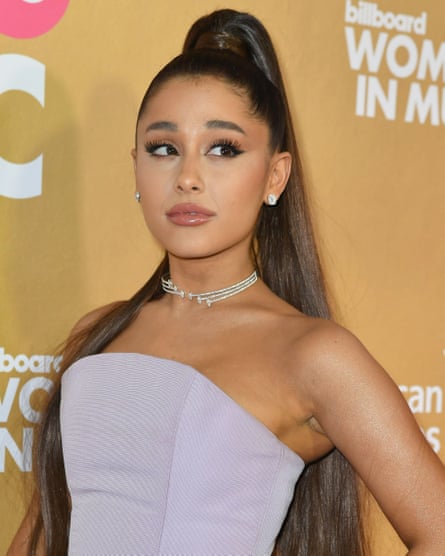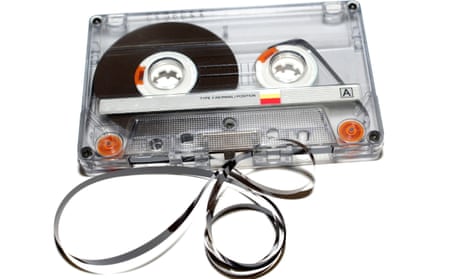Pause. Stop. Rewind! The cassette, long consigned to the bargain bin of musical history, is staging a humble comeback. Sales have soared in the last year – up 125% in 2018 on the year before – amounting to more than 50,000 cassette albums bought in the UK, the highest volume in 15 years.
It’s quite a fall from the format’s peak in 1989 when 83 million cassettes were bought by British music fans, but when everyone from pop superstar Ariana Grande to punk duo Sleaford Mods are taking to tape, a mini revival seems afoot. But why?
“It’s the tangibility of having this collectible format and a way to play music that isn’t just a stream or download,” says techno DJ Phin, who has just released her first EP on cassette as label boss of Theory of Yesterday.
“I find them much more attractive than CDs. Tapes have a lifespan, and unlike digital music, there is decay and death. It’s like a living thing and that appeals to me.” Phin left the bulk of her own 100-strong cassette collection in Turkey, carefully stored at her parents’ home, but bought “20 or 25 really special ones” when she moved to London. “I’m from that generation,” she says. “It’s a nostalgia thing – I like the hiss.”
That familiar thunk, click and whir of a cassette being played in a stereo makes up the opening note of Calvin Harris and Dua Lipa’s global floorfiller One Kiss; the track was the UK’s biggest single of 2018 and spent eight weeks at No 1. Its digital “sleeve” was designed especially as a tape cover. Fast forward to last week, and British songwriter Jade Bird announced her new release as a limited edition cassette, Ariana Grande’s Thank U, Next is top of the tape chart (with 540 copies sold on cassette last week) and Urban Outfitters is selling four different kinds of cassette players to its primarily twentysomething audience. Hi-fi store Richer Sounds is selling two.

At the independent record store Rough Trade, marketing manager Emily Waller can’t say whether customers are actually playing the cassettes they buy. “It’s still a nice put-me-in-your-pocket keepsake or collectible for a fan. Old stuff is hip, right? We’ve seen through vinyl sales the increase in demand for these ‘retro’ formats, particularly among young people.”
Cassette culture is thriving in the electronic music, DIY and avant-garde scenes where labels such as Manchester-based Sacred Tapes and Ireland’s Fort Label Fruit are pushing tapes to fans via online music platform Bandcamp. The cheap cost and fast turnaround of manufacturing cassettes is a key part of the appeal for those committed to the cause.
“Vinyl has got so expensive to manufacture these days, especially if it’s only a seven-inch you’re putting out. You’ll only lose money on a seven-inch release,” says Tallulah Webb, who runs cassette-only label Sad Club Records. “Cassettes are an exciting way to put music out, in the same way that seven-inch singles were exciting for punk. They have always been a crucial part of the DIY scene.”
Retromania is nothing new. The fondness for recycling pop culture’s past has become a defining marker of millennial culture: the industry for “nostalgia marketing” has boomed for brands selling to the under-35s. And so Instagram is awash with #vintage #cassette posts, and over on Etsy, a replica plastic Sony Walkman (one that can’t actually play any music) is being sold for £79.
But not everyone is keen. Peter Robinson, founder and editor of Popjustice, believes the trend for tapes is a gimmick too far. “Cassettes are the worst-ever music format, and I say that as someone who owns a Keane single on a USB stick,” he says. “I can understand the romance and the tactile appeal of the vinyl revival, but I’m actually quite amused by the audacity of anyone attempting to drum up some sense of nostalgia for a format that was barely tolerated in its supposed heyday. It’s like someone looked at the vinyl revival and said: what this needs is lower sound quality and even less convenience.”
Streaming now accounts for nearly two-thirds of music consumption in the UK and while demand for vinyl is up by 2,000% since the format’s low point in 2007, the market share for cassettes is tiny. Robinson is cynical about cassette sales whirring back to life.
“I think labels know full well that almost every cassette they sell is going straight on a shelf as some sort of dreadful plastic ornament,” he says. “I don’t think it’s much different to the recent trend for pop stars adding pairs of socks to their merchandise lines, the crucial difference being that, for better or worse, socks don’t count towards the album chart.”
